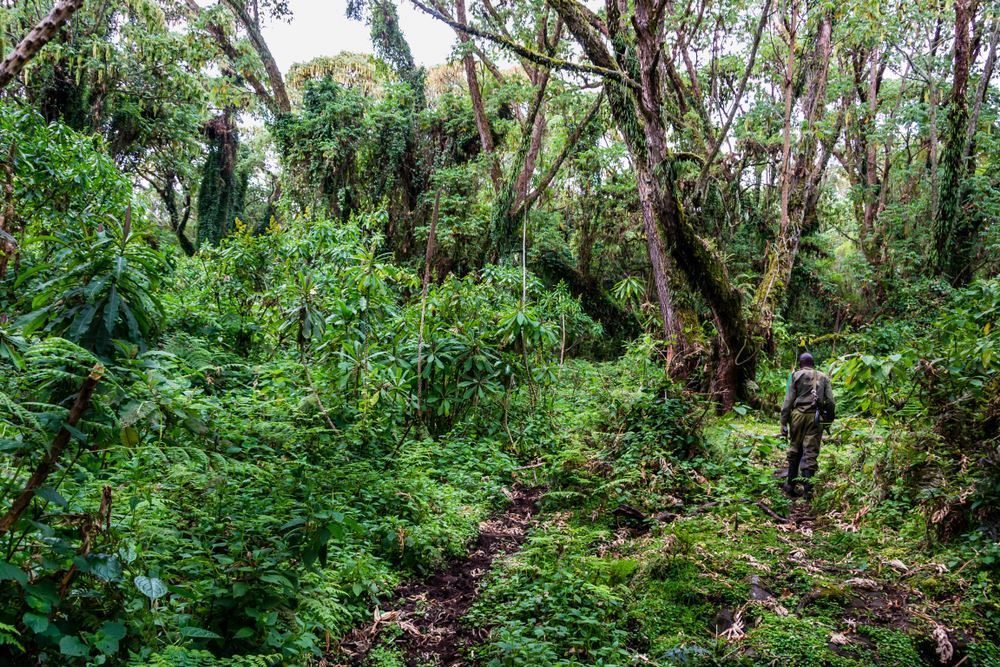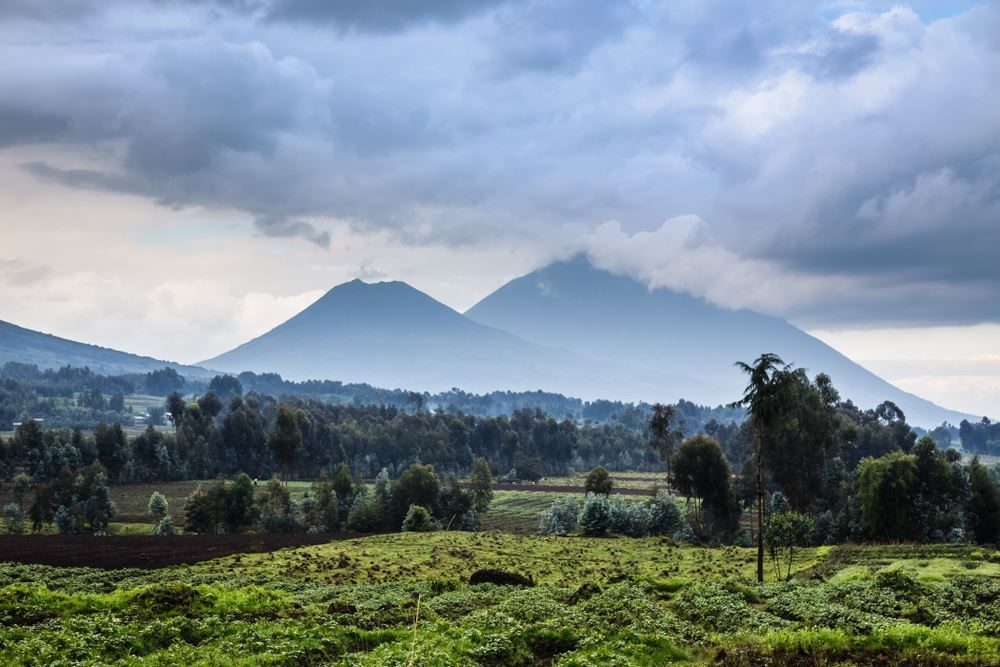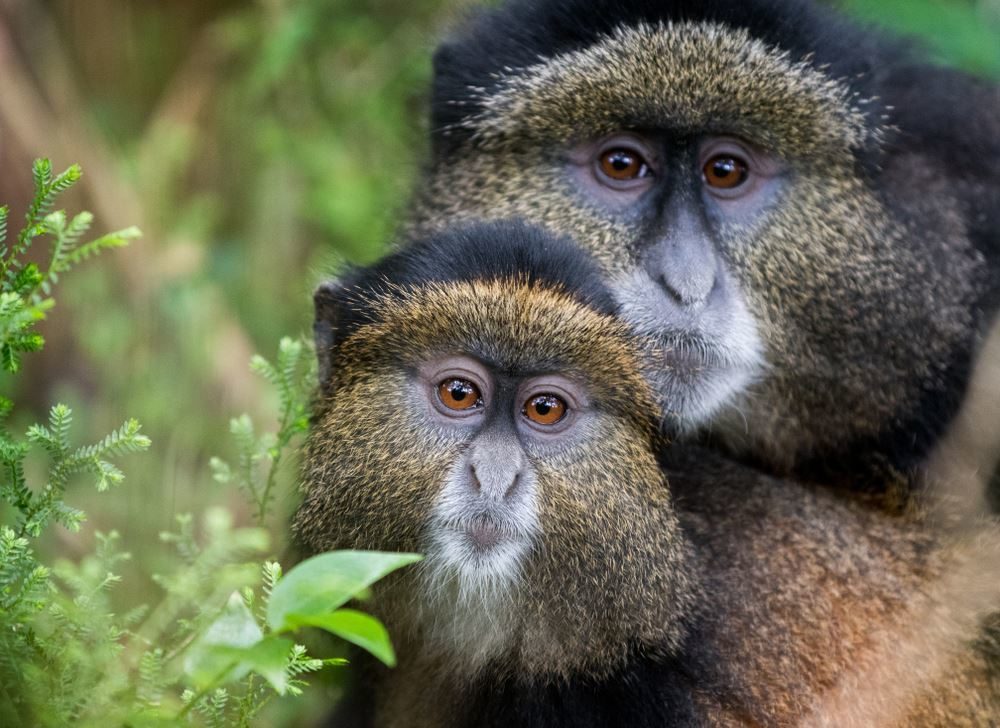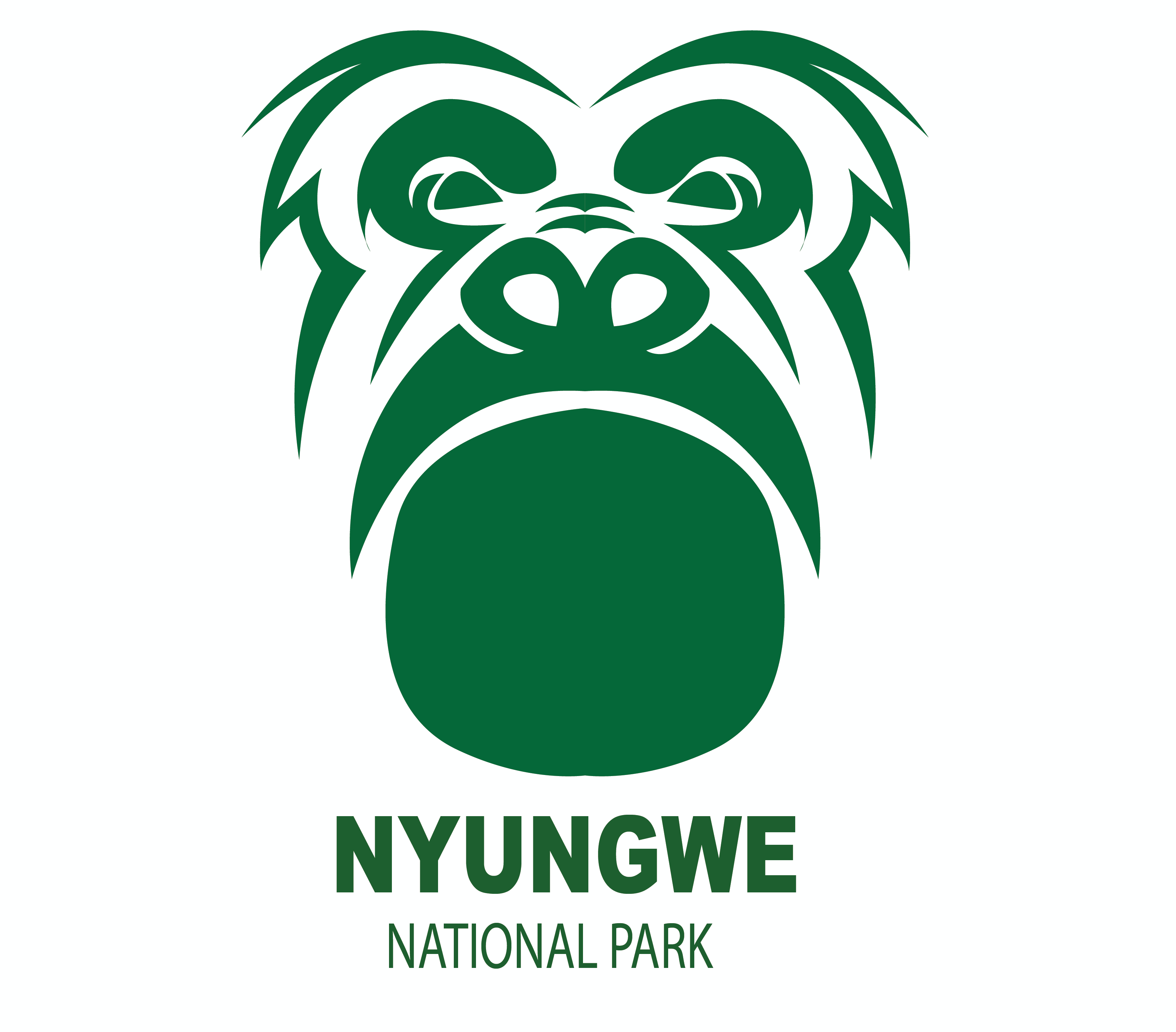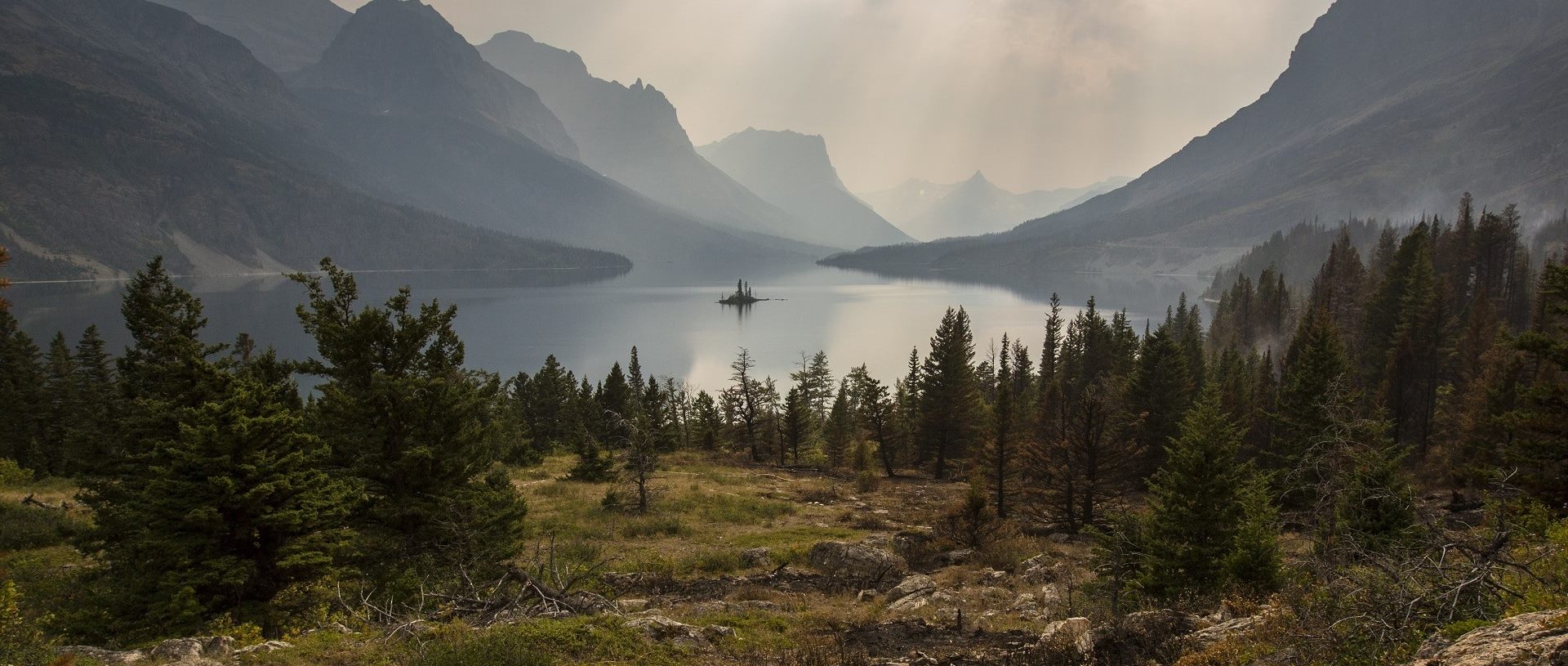What to do in Volcanoes National Park
Gorilla Tracking
The unique opportunity to see gorillas in their natural habitat is unforgettable, some even say life changing. Encounters with gorillas as they go about their daily lives are carefully managed, with expert trackers and guides leading small groups of tourists up bamboo-covered slopes to spend a precious and awe-inspiring hour just a few feet away from the gentle creatures.
The largest living primate, gorillas are spread across much of the equatorial African rainforest. Broadly speaking, the species is split into lowland gorillas and mountain gorillas.
The volcanic range which spans Rwanda, Uganda and the Democratic Republic of the Congo is home to the critically-endangered mountain gorilla. Tracking gorillas in Rwanda is safe and relatively accessible.
At the latest count, there are approximately 1,000 mountain gorillas in the wild, with 604 in the Virunga Massif. The population is slowly increasing, thanks to concerted efforts between our governments, communities and NGOs.
There are twelve gorilla families living in the Volcanoes National Park, which are fully habituated, with a few others habituated solely for scientific research. The groups, or troops, consist of at least one silverback along with several females and youngsters.
The troops are somewhat fluid in composition, but tend to stick to a preferred area. They are constantly monitored and protected by park rangers, with each group coming into contact with tourists for a strict maximum of one hour per day.
Eight tracking permits are issued per troop per day, meaning the encounter is as intimate and as unobtrusive as possible. With only 96 permits available each day in Rwanda, it is highly recommended to book in advance, either online or via a reputable tour operator.
Visitors gather at the Volcanoes National Park headquarters in Kinigi at 7am, and are allocated a family group on the day according to fitness levels, as well as being briefed on protocols and rules for visiting the gorillas.
The families are known as Susa, Igisha, Karisimbi, Sabyinyo, Amahoro, Agashya, Kwitonda, Umubano, Hirwa, Bwenge, Ugyenda and Muhoza.
Hikes up to their various locations can last anything from 30 minutes to four or more hours, reaching an altitude of between 2,500m and 4,000m. Porters are available to carry backpacks and cameras, as well as to offer a helping hand along the route.
10% of the revenue from the permits is channelled towards local communities, to build schools and health centres, as well as roads. There is a compensation fund for local farmers should any gorillas damage their crops, which helps to ensure peaceful co-existence.
Gorilla tracking also provides employment for many locals, from rangers and trackers to porters, drivers and staff at tourist lodges.
For those interested in tracing the footsteps of Dian Fossey, her tomb is a 30-minute drive from the park headquarters and then two or three hours hike through the forest, to above 3,000m altitude.
The annual Kwita Izina gorilla-naming ceremony is a special time to visit the Volcanoes National Park, with guided tours leading up the main event providing an opportunity to meet park staff and conservationists, attend cultural evenings and a celebration in Musanze.
At the naming ceremony itself, there’s music, dancing, and discussion about Rwanda’s great strides in gorilla conservation, and the great challenges that remain.
Conservation organisations currently working in Rwanda include: Dian Fossey Gorilla Fund International, The Gorilla Organisation, International Gorilla Conservation Organisation, Gorilla Doctors and Wildlife Conservation Society.
Good to know
Permits
What to Wear
Hiking
Rwanda’s epic scenery, pleasant climate and magnificent wildlife make the land a remarkable place to explore on foot. The best hiking to be had is in the western half of the country, all the way from Volcanoes National Park in the north, along the fringes of Lake Kivu in the west and down to Nyungwe National Park in the south.
A range of six extinct and three active volcanoes form the Virunga Massif, spanning altitudes from 2,400m to 4,507m. The Volcanoes National Park protects the Rwandan sector, with the other slopes falling within Uganda or the Democratic Republic of Congo.
The park is best known for tracking gorillas but there is plenty more to see and do. The shortest hike is to Lake Ngezi, a scenic little lake nestled in a volcanic depression at the foot of Mount Bisoke. It takes about three hours in total and is relatively easy going, with the possibility of encountering wildlife along the way as well as gaze across to the Congolese forests.
For those keen to summit Mount Bisoke, a crater lake awaits at the top, which lies at 3,700m. This trail takes anything from five hours to a whole day.
The highest peak in Rwanda is Mount Karisimbi, which translates as white shell, referring to the frequently white-capped cloud cover at the summit. At 4,507m it is a strenuous yet rewarding hike, which takes two days, camping along the way. As this is the territory of gorillas, other primates and many bird species, hikers could be blessed with a chance meeting along the way.
In the saddle area between Mount Karisimbi and Mount Bisoke is the Karisoke Research Centre, founded by Dian Fossey in 1967, as well as the site of her grave. The walk up takes about an hour to an hour and a half, starting with a drive from the park headquarters 30 minutes away.
Other hikes include Mount Muhubura, a demanding full day climb up to 4,127m, and the scenic twin lakes of Burera and Ruhondo. It is possible to reach a viewpoint over the lakes by car, so hikers shouldn’t expect to be alone. For those keen to change it up a bit, it is possible to hire a boat for a scenic lake cruise.
The Buhanga Eco-Park offers more of a wander than a hike but is nevertheless worth considering. Paths crafted from lava stones form an interconnecting network between observation platforms, sometimes running between ancient ficus trees with creepers clinging to their trunks.
Rwandan kings of old were crowned in the caves in the Buhanga sacred forest, which translates as creation. Alongside its cultural significance, it is also quite beautiful, with rare orchids and butterflies.
All of the above require a permit and a guide. Conversely, Mount Kabuye can be accessed freely, lying outwith the Volcanoes National Park to the south east. It is popular with volunteers working within Rwanda and takes about five hours to reach the top, lying at an altitude of 2,700m.[/vc_column_text][/vc_column][/vc_row]
Galley
